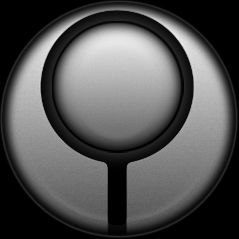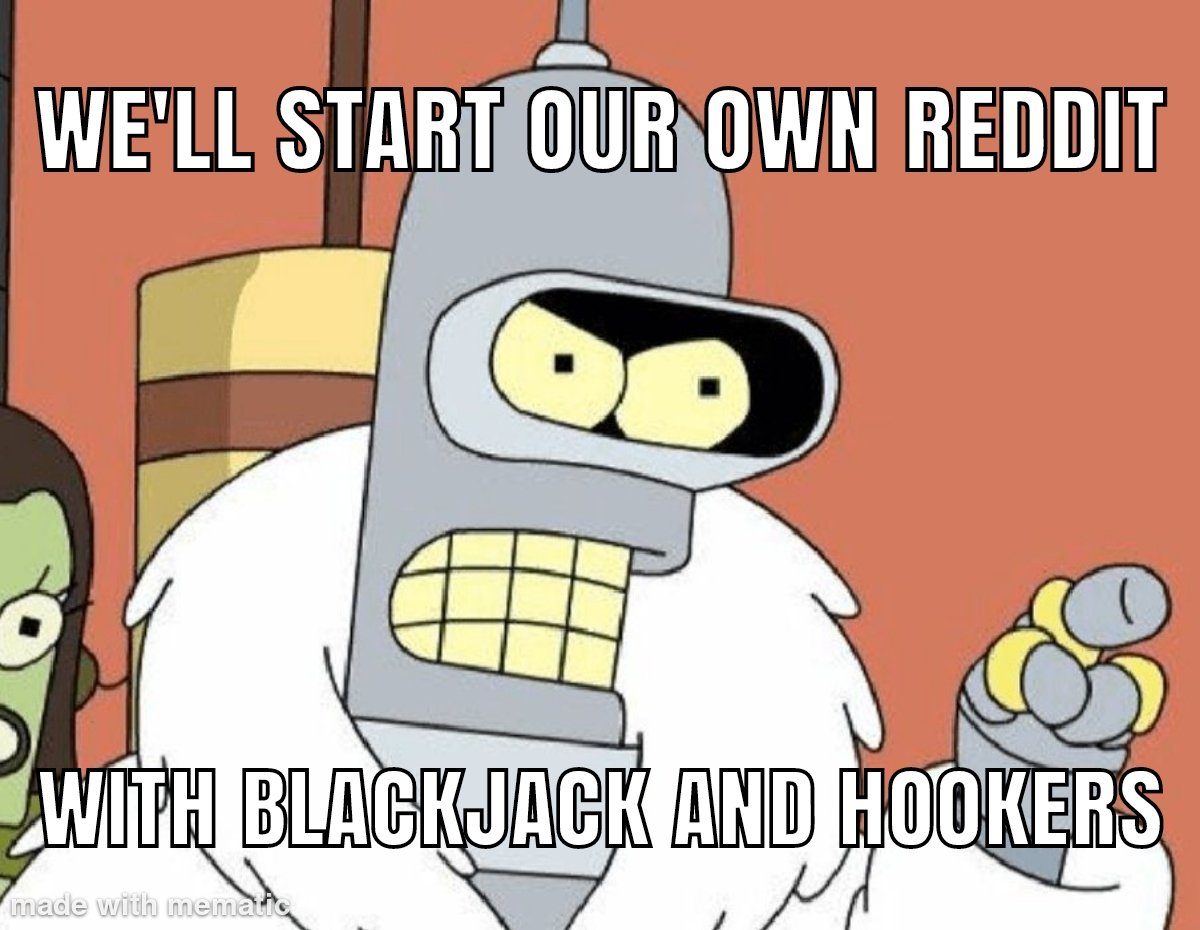Some do, but because of the prevalence of automatic coffee machines and microwaves there isn’t as much of a need outside specialty coffee drinkers.
The argument about speed and convenience doesn’t work in the US because of the outlet voltage as well. The 110-120v outlets don’t provide the same level of power to kettles so they can’t heat up as quickly. If you have a microwave it’s just as fast or faster.
He addresses this some. 120v is still a lot faster than boiling water on the stove. Coffee makers are significant, but boiling water in a microwave is generally a bad idea, given the risk of superheating (not that people don’t do it.)
I have never once (unintentionally) superheated water in a microwave, and I’ve been using them since about 1980 (and God knows we were idiots with them back then).
It just doesn’t happen - there are too many imperfections in our containers, and too many minerals for it to happen much.
I’ve experimented many times, and the reality is you have to work at superheating water in a microwave.
For me, it’s taken things like a brand new Pyrex measuring cup (glass), and filtered water. I can do it with other stuff, but I’ve had to boil/cool it multiple times, something that isn’t really going to happen.
He goes into it in another video on the channel. Almost everyone I know uses a microwave for water.
Huh. I have. Didn’t know what it was, but heated the water, dropped in a spoon and it boiled over aggressively even though it didn’t look like it was boiling.
We do use a kettle, this happened at work - the microwave there was a lot stronger than mine, and I couldn’t get the water to look like it was boiling.
Same here, happened when I was young. Thankfully I wasn’t holding it in my hand, it was on the counter. I didn’t get burned
I’m in US. It takes roughly 2.5 minutes to reach 200F (coffee), and roughly 3 minutes to reach 213F (tea) and I’m talking 1 liter of water.
Also, good luck fitting 1 liter in most microwaves.
Voltage isn’t equal to the level of power though, a 110v can provide the same power as 240v. I think tea drinking just isn’t as popular in the US.
It’s not, but you need over twice the current to supply the same power, and since many safety measures and physical constraints limit the current, it effectively means the power limit is more strict.
This is assuming the same cables and breakers etc being used for both voltage ratings. I know there are specific wiring and connection systems for high amperage stuff in 110v places (probably for some 220-240v places too, but I’m in a place with notoriously bad electrical everything, fuck if I know)
Makes sense, I think you’re right and that the wattage still ends up being lower overall in the US.
Uh we do.
Yeah even with our slow, low wall-voltage, having a dedicated boiler is fucking nice. Takes up some counter space, but it’s worth it.
Cocoa, tea, coffee, whatever - it’s nice. And the vibe is nice.
I thought for a second that you said you boiled coca cola
Not less bad then the acrual written thing.
Cocoa? In a kettle?
Lol not IN the kettle, but made with the hot water you get from the kettle.
Also I’m talking hot cocoa, not hot chocolate. Two different things, one is with water, one is with milk, at least in my casually defined book.
I only know both in the form of milky chocolate.
And some are intended to be stirred into water because it contains powdered milk.
Do you know the brand Swiss Miss? https://cdn.shopify.com/s/files/1/0610/5464/8564/products/image_86ef1f17-7772-48b2-a5a5-248a650eff8d.jpg?v=1677099961
Very cheap. Very nostalgic. Very shelf stable hahaha
Edit: also this stuff https://m.media-amazon.com/images/I/81YpaO6M8QL._SL1500_.jpg
Insanely nostalgic for long roadtrips where you’d stop at a rest stop in the middle of the night to use the bathroom and stretch, and there’d be people with hot water, styrofoam cups, and packets of tea, coffee, cocoa, and cider for free. Core memory, right there.
Not really.
But understandable.I had some Lindt hot choco packets and at first also used hot water.
But the result was so thin I quickly switched to milk (as it should be).
Probably needed some more milk powder to compensate for the water.Oooo, I haven’t had the Lindt ones. Nicest packet ones I’ve had are the Ghirardelli ones that come in different flavors. Those are always delicious. I’ll have to keep my eyes peeled at the store for the Lindt ones though.
What’s the best hot chocolate/cocoa you’ve ever had?
Agreed, works well for serving dried oatmeal to a table as well - the bottom doesn’t get quite as hot as a stove kettle or microwaved container.
Most of my friends have electric kettles. I like a nice pot of tea or french press of coffee / yerba mate yet I still have an auto espresso machine.
Yep. I’ve got 2. One in the house for hot chocolate, and one in my woodshop for um, woodshop things.
I’m also a woodworker. What do you use a kettle for out there? Mixing your own shellac or wax or something?
I mainly use it in the winter as a source of hot water when I’m working with 2 part epoxy to warm up the bottles so it isn’t as thick and mixes easier.
Shellac dissolves quite readily in alcohol at room temperature.
We…do.
120v vs 220v
Also tea, as in tea time. Americans don’t have this custom, so it’s not a big driver.
That’s a contributing factor on the comparative desirability of an electric kettle here vs there, but I think the more significant part boils down to familiarity and need. Most Americans just don’t drink tea/cocoa/instant-coffee regularly enough want a separate appliance for it. And if the boiling is for cooking, most folk would just boil the water in the pot they will be cooking in, and probably with the lid off because we are lazy like that; time and energy efficiency be damned.
Yes the preference for coffee over tea is very strong and a lot of people do t drink either.
Another factor is the coffee maker use. Personally I think they’re pointlessly limited machines and they get nasty quick. But people love them for some reason.
I’d love it if someone would market a 240V kettle for the US. I’d install the 240 line for it. I mean I use the damn thing multiple times per day, more than my stove, and that has a 240 line.
Still. I’m not convinced it would make a major difference. Like I said I have a 240V induction stove and I have experimented with how fast I can boil water on that thing in a suitable pot or kettle, versus the 120V electric kettle. It is not a big difference. We’re taking a few seconds.
In the winter months when we’re drinking lots and lots of warm beverages we plug in the Zojirushi hot water carafe and have hot water all the time, instantly. It does consume some energy to keep it hot all the time, but it’s well insulated and we use a timer to turn it off at night and then on again in time for morning wake-up. Eliminates the wait entirely.
You should look into getting a hot/cold water dispenser for your sink. Easy to DIY install.
They consume ~40w per hour. Where I live it is 15 cents per kwh. That’s .006 per hour, .15 per day, or 55 dollars per year.
Instant hot/cold water whenever you want it is nice.
Starting from room temperature water to near boiling takes a ton of energy. I don’t know if keeping it hot for 8 hours takes more electricity than starting it back up in the morning.
But you’re probably paying half the $55 in electricity right now for the Zojirushi.
Id pay $25 dollars a year to have instant hot and cold water (even filtered if you wanted) on tap 24/7. Especially if I were like you and used it multiple times a day.
You only need a 120v outlet.
I get hot water instantly for most of the year thanks to 110F outside temp.
I’m talking about an instant hot water dispenser which can put out 210°F or 99°C almost instantly.
You have three main ways to heat water for something like tea.
1 Boil on stove top
2 Electric Kettle
2.5 Electric Kettle with larger tank and dispenser (Zojirushi)
3 Instant hot water faucet with heater tank under cabinet
*Microwaving water can be very dangerous
My opinion is while opinion 3 is the most costly, it is super nice and convenient if you use it often.
Anything that boils water can have that dangerous over boil.
Honestly a faucets that puts ot water that close to boiling would More likely to burn me then any microwave.
You make an interesting case. I haven’t seen one of those that I liked. Just the nasty ones from the 80s that were always crusted over with scale. We do have to descale the Zojirushi often.
Starting from room temperature water to near boiling takes a ton of energy. I don’t know if keeping it hot for 8 hours takes more electricity than starting it back up in the morning.
This made me think.
It seems like it would be a wash in the end. The Zojirushi is insulated, so it stays pretty hot even in the 8 hours it’s turned off overnight. But let’s imagine it is losing a certain amount of heat called “x” per hour.
In the morning I’d have to spend 8x to get it back up to temperature. But it still loses heat even when it’s turned on. So I’m already spending the same x every hour just to keep it on.
Now let’s imagine that the insulation loses x per hour but 4 hours is enough to leak all the heat out. Okay, I’ve lost 4x. But I would have spent 8x to keep it on all night.
So it seems like it can only be a gain to turn it off for certain spells. And that is intuitively obvious, too: turning something off should save energy.
Thought of something else. Your water heater stays on 24/7.
The only hot water I use in the morning before I go to work is to wash my hands.
If I don’t get home until let’s say 5. I’d need to wash my hands some more but I don’t need hot water until I take my shower at 9.
So really I would be keeping 80 gallons of water hot for 23.5 hrs so I can use ~30 gallons in 15 minutes.
It’s only keeping it at ~120°-140°F (~50°C) compared to 210° (99°C) of the instant hot water tank.
I have a tankless water heater so that’s not a problem for me, but seems crazy thinking about it now.
Which leads me to my next thought. I wonder if they make tankless under sink hot water dispensers?
So it seems like it can only be a gain to turn it off for certain spells. And that is intuitively obvious, too: turning something off should save energy.
Cars get better mileage on the highway than on city roads. Drive an hour, stop, drive an hour, stop, drive an hour. It is less efficient than driving 3 hours nonstop. The more stops the more inefficient.
The under sink heaters are designed to keep water hot 24/7. I would image it is better insulated than the Zojirushi. The water is stored in a container that basically heats it up from every side. Some kettles like the one in the video have heating elements inside the water which is more efficient than just a hot bottom plate. Under sink heater has a hot plate on all sides of it’s box.
From my experience, I’ve had one my entire life and couldn’t go back. I would expect at least 7-10 years from one. One in my current house is 7+ years old and works exactly the same as the day I installed it. Never turned it off once.
I’ll add this too:
You can get a filter for the dispenser. Pure drinking water and hot water while reducing scale buildup.
I don’t have a filter on mine and I have never done any descaling or maintenance on it in 7+ years other than cleaning the faucet like I would any other faucet.
Pro:
- Instant hot water on tap 24/7 (Instant cool drinking water 24/7)
- Able to easily filter water
- Unlimited water (No refilling unit)
Con:
- Extra electricity
$30 extra a year?
Like would you pay $2.50-$5 monthly subscription for unlimited instant hot/cold filtered water on tap whenever you want it? (above $2.50 would be for cold and filter if you choose those options instead of just hot. Since I assume cold takes more energy and you have to replace filters)
Doesn’t make sense for everyone, and you do have to think about the upfront cost. You can get a tank for ~150, then the faucet can be ~50 to whatever you want to pay.
So maybe if your Zojirushi ever breaks. I enjoy my Zojirushi bread maker a ton.
I use them all the time! Unfortunately though our power system uses 120v and not 240v so our kettles aren’t as effective here. Still, MUCH more effective than boiling on the gas or electric stovetop/range.
Ironically it was after I spent time in Europe for work in the early 2000s that I picked up on this and bought one for my house. Now with my family of four, we use them regularly.
Edit - also Technology Connections (my favorite nerd out YouTube channel) did a video on this.
And I’m an absolute bonehead for missing that this is the same video as OP posted. Please forgive me for being excited as an American that uses kettles!
Uhm your link points to the same video by Alec as the OPs link. Just saying :)
Ha, I totally missed that, thanks. I just got excited about the subject and didn’t watch the video.
Remember Brown is just Orange with context. (Which strangely now has a new context)
I’m curious since you guys still use 240V for washer, dryer, cooker, EV charger, etc. Could you legally install a 240V socket (with a different plug type) and use an appliance from a 240V country?
I get it would probably be overkill for a kettle alone but I’m curious why it’s only common for some things. Is it regulated, like do devices need a special approval to be allowed to run 240V in US?
Nope, it generally is not a good idea to try that. It might possibly work, but European power typically runs at 50hz (50 cycles per second) and the US is designed at 60hz. This small difference can mean that a European device would operate more quickly than designed. This is especially an issue with devices that have internal timers or motors.
Also, we have different plugs in the US for our 240v appliances, which would mean an interesting plug adapter situation.
So it could possibly work, or it could break the thing, or start a fire. Generally not for the faint of heart and definitely should consult an electrician.
You’re right about the frequency for sure, most things with an AC motor for example wouldn’t handle it.
But a quick search shows people have done this for things like kettles without issue.
For an electric kettle, which is usually a simple resistive load, I’d feel safe plugging it into American 240V60Hz.
It’s perfectly legal to install a 240v outlet. They’re most common for electric stoves and dryers, but you also see them for machine equipment in a garage or workshop, air conditioners, electric heaters. There’s no reason you couldn’t have one in a kitchen.
Finding an appliance to use it might be different. Not only would an appliance for another place be designed for different electrical system (eg 50Hz instead of 60 Hz) but there would be none of the typical certifications and it would have a different plug. Technically there’s nothing stopping you, but you’re probably past the threshold of plausible deniability.
That being said, it was tempting!
I’ve thought about doing this. In fact, if I ever own or build a house, I’ll be adding 240v plugs for exactly this reason. Something like a nema 6-15 or 6-20, with a GFCI breaker in the box to make it (presumably) legal.
the legality would depend on code and regardless of voltage we do have 60 htz not 50 htz. That would only matter if there was a clock in the device. You also need to make the wire in the wall can handle it. Fun fact a lot of cheap device with times use the electrical frequency to keep time. That could also lead to wearing down of some parts faster.
Does nobody just microwave water?
I have a small cast iron kettle that I usually microwave.
it makes spicy water.
Jokes aside, you can microwave small smooth metal vessels. Like mixing bowls and such.
Do so at your own risk, if it doesn’t specify that it’s microwave safe.
But you can buy ones that specifically say they are microwave safe. It just means they’re extra smooth, nowhere for charges to accumulate or concentrate. Might have something to do with it’s size too, not being resonant at 2.4ghz, but don’t quote me on that part.
Useful if you don’t want to take leftovers out of the plastic container first, and if you’ve had glass explode on you before.
My wife does. I have a thing for using a kettle on the oven.
I’d rather not because of the obvious dangers
The conditions for that to happen are quite rare. Not worth worrying about.
I would but I have a rather small one. I used to at my old house microwave the tea water.
I have a nice electric kettle that I use for pour over coffee, but my morning tea, I just nuke a tea bag in water for a minute and a half, and move on with my morning.
I’m great in the AM. I just want caffeine.
You microwave the water with the tea bag already in it? At least drop the bag in after microwaving… The superheated instant boiling thing can be mitigated with basically anything in the water. Hell, my local water is hard enough to avoid it straight from the tap.
I microwave with the bag in. You want nucleation sites during heating so bubbles can form. If you ge over 100c with water in a smooth container, then add tea, that’s how you instantly boil over.
That said, I’m in the camp that wants their black tea just under the boiling point. It’s less bitter and doesn’t need cream or sugar. I know that a certain time, cup size, and power level usually sticks the landing between 95c and 100c.
The superheated instant boiling thing can be mitigated with basically anything in the water.
A teabag, for example.
I’m American and I use one. It’s great.
Got into French press coffee a few years ago and bought one.
Same here. Got it for French press coffee for me and hot cocoa for the kids.
Realistically I rarely use it and I really can’t claim it saves noticeable time but it’s so simple and and cheap an appliance that i consider it well worth it
Same. I bought the kettle for tea but I’m not really big on tea. I’ve used it to make big batches for beer brewing, but not a lot for individual cups of tea. Now I have the French press and use it daily.
We do? I’ve had one for over a decade
Use it all the time, but rarely for tea. Boiling a few eggs last night. Half the water in the electric kettle, half in the pot on high, join half way through to speed up the process. Making ramen, kettle. There is always some reason I find it useful.
Why do people think we don’t use these? Almost everyone I know has one.
No you don’t, the justice department found no evidence of kettle use
Case closed! Wrap it up everyone. Pay no attention to the single missing page in the Walmart catalogue submitted as evidence.
I have a kettle sitting on my counter right now for use, along with my coffee maker and the MLK files.
Three reasons I can think of.
-
Americans don’t drink much tea. And soo…
-
Not many stores carry electric kettles.
-
Microwave tea.
deleted by creator
Uhhhhhh did you watch the video?
He goes to great lengths to point out that it isn’t an efficiency problem, and despite US residential standard outlets being 120VAC dedicated electric kettles are still the fastest way to boil water given other appliances (though induction cooktops are closing the gap).
The biggest reason dedicated electric kettles are not popular in the US is because we’re either boiling water for cooking some meal (pot is already on the stove so why bother with another appliance) or we’re making coffee. And the vast majority of coffee makers over here have the exact same circuitry and heating elements as an electric kettle. It’s just not standalone
Why don’t Americans use electric kettles?
Serves me right, I guess. I went by the thumbnail, remembered him talking about the difference in efficiency due to different voltages and took the wrong information to heart. So, I was wrong :D
yeah most homes in the usa have a coffee maker, microwave but no need for a kettle
-
The niche coffee scene in the US uses them, they are excellent for pour overs, French press, etc. But they are not widely popular since dedicated coffee machines are most commonly used.
For anyone concerned about the quantity of plastics you consume, coffeemakers have a lot of plastic but kettles do not.
My electric kettle has plastic parts. Also my pour over funnels are plastic. This is not a meaningful distinction between the two.
Maybe I was looking at the bougie ones then.
My kettle is glass and stainless, and everyone I noticed was either glass or stainless. Plastic is only on. The outside: lid and base, and you’re not drinking out of those
My pour over funnel is silicone. Like plastic but different. Assuming it’s food grade, less likely to be harmful
I think it’s fair to say that kettles and funnels can be found in non-plastic materials. And I have to admit I’ve never seen an”coffee maker” that wasn’t plastic. I suppose a restaurant grade Bunn machine has a stainless steel basket and a glass carafe, but there isn’t anything for the home. Unless someone is about to tell me I’m wrong, which, this being Reddit, someone probably is.
I…what? I do, most of my friends do. They’re amazing.
120V vs 240V.
One has much more power available to achieve the same in a different time.
For example: I can easily boil 0.5L to 100°C of water in about 2-3min.
And the kettle is rated for 2kW.That’s very true. With that said, I still find 110v kettles to be pretty fast for my needs. Especially if just making a single cup.
actually that the why they are slower. most plug in devices in the usa are limited to 1.5 Kw. weather you used a 120v or 240v current it would just change how many amps it draws
2 kW @ 120 V is 16.7 A, which exceeds the 15 A limit on most household wiring in North America. To be able to achieve that you’d need to get a 20 A rated circuit installed by an electrician which means pulling out and replacing the wiring with a heavier gauge.
The advantage of 240 V rating in the UK is that you can draw more power with less current, so you don’t need the wiring to be so heavy for a high power appliance like a kettle.
yes. a 1.5 kw heater at 120 and a 1.5 kw heater on 240v would draw different amps but they would heat water at the same rate.
It was mentioned above that British kettles are 2 kW, not 1.5.
Well yeah.
But if both are rated for 6 or 8 Amps and can only supply 240 or 120V, you are bound to that.
Thus the volts are important as well.Something rated for so few wouldn’t be a good heater. At 1.5 kw that typical cut off for small devices in USA. You draw 12 amp. Plug it into a larger 240 vlot circuit and it draws amps but you still only get 1.5 kw of heating. Same time to boil water
Voltage is only half of the equation. It’s wattage that determines how fast a kettle can boil water, but the UK does generally have higher wattage kettles than the USA. Most are 1800 here in the us, while they can be up to 3000 in the UK.
That’s exactly the point. Home connections are limited to a specific amperage (15 or 16) pretty much all across the world - certainly not beyond that anywhere. Voltage remains the only difference: 120 vs 240. With 120V at 15A you can only go up to 1800W which does take a long time to boil water.
Yes, you could have multiple phases to get to 240V in 120V countries to boil water faster but these would be special outlets and not meant for a kettle that you could buy from a Walmart.
We do? I have one. Know lots of people that have them. They sell them at Walmart for like 20 bucks.
I think certain regions of the US do have them and others do not at all.
For example, where I am at, I have only met one other person in real life that has one. But I do hear about a lot of my friends on the east coast having them. Dunno.
I’m east cost as well. So you might be on to something there.
I use an induction kettle on the induction stove top in Australia (240v).
What does this mean? Are you talking about a Whistley kettle on a normal stove?
Sort of, don’t have the whistle part, so annoying.
Australian looking bewildered with their kettle and microwave I like making a cup of tea while I reheat my lunch.
Do Americans have multiple microwaves?
I’m an American, and yes, I have two.
One of them is a cheap $30 one we bought when we moved in and needed to heat meals from frozen because we didn’t have pots and pans yet, and it’s now in its box in the storage closet as a backup in case our good microwave breaks, but I do have two














